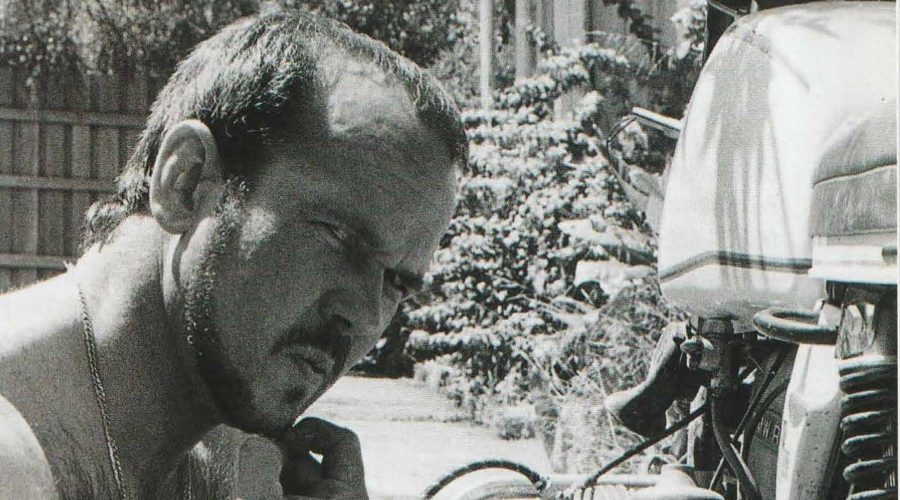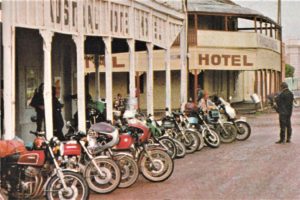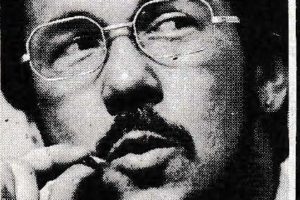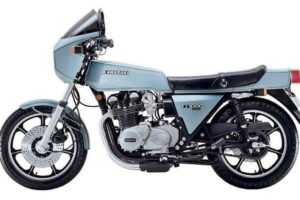Behind Bars: Cannonball, One Helluva Blast!
The talk is there, the message is clear: let’s make a show of reducing the fuel consumption by lowering the speed limit throughout Aussie-land even more, to around 90 km/h.
The political blanket is spreading it out as a reasonable way to be seen to Do It. The USA has a lower overall limit, the dreadful, mind-numbing 88 km/h (55 mph). You can get booked there for doing 1.5 km/h over that limit!
This was a courtesy gift to the American people from Richard (So Help Me God) Nixon. And if his performance is anything to go on then we can expect the same sort of unconcerned treatment from our Main Man, Malcolm (When I Want Your Advice, God, I’ll Ask) Fraser.
If you follow some of the motoring mags you might have seen that in the USA the ideological answer to this unreasonable law is an unofficial, illegal race across the country called the “Cannonball Express”, named after coast-to-coast driver Ernest G. “Cannonball” Baker, who set 21 cross-country records back in the 1920s and 1930s.
The last, by the way, was his 1933 run from New York to Los Angeles in 53 hours and 30 minutes at an average speed of 100 km/h – all before there was a kilometre of freeway!
The 1979 Cannonball was the fourth annual run and attracted 46 entries, of which 42 finished. Among these illegal racers were two motorcycles: a BMW R90/6 ridden twoup all the way and a Suzuki GS850 with five riders. Both bikes had super tanks, radar detectors and CBs. The BM became stuck in a snowstorm and held up for a day, but finished – last. The GS850 did the run in 43 hours and 32 minutes at an average speed of 112 km/h for the 4800 km. It was stopped five times and earned some big tickets (like one of $195).
The USA event attracts a star cast and big money for the run. The crisscross pattern of expressways (changed to crawlways now with the 88 limit), freeways and normal highways means contestants can run various routes, dodging police and truckies, who this year did not like the race runners blowing by the straight traffic at more than 200 km/h! No accidents and no injuries proves something we have been onto for years. Absolute speed isn’t the big Number One killer.
But with the probability of a blanket lower limit in our wide-open land I think there should be some form of Cannonball for the Down Under triers. After all, we have far more primitive roads, higher fuel costs, and less sophisticated police surveillance than the USA. It’d probably be better starting from the West too, because alternative routes start in South Australia to run through the more populous areas.
Ours could be called the “Kangaball” or perhaps the “Emu Express”, for although there would be less chance of being sprung by radar and helicopters on many of the roads, there would be the additional pinballing obstacles of ‘roos, emus, wombats, and the dreaded cattle or even horses. These also help to make it more of a carefully calculated run (like planning it to be on the best highways at the best times) rather than a victory run for the fastest vehicle. This would be a race of survivors rather than just the fleet…
The distance from Sydney to Perth is less than the USA crossing, around 3900 km. With the poor roads here countered by the equalising effect of wide open plains for much of the distance and an average speed of, say, around 140 km/h, any “Kanga” winner would be finished in about 27 hours. This seems reasonable for a bike, going on what hardy riders can achieve without incentives.
I can tell you that a certain Yamaha XS Eleven owner who is a tough nut rode back from Cairns to Melbourne, with his wife on the back, in 27 hours! That is definitely a record of some sort. The big shaft ran the 3600 km (almost the same as Sydney-Perth) at an average speed of around 133 km/h two up. The rider (who has since fitted a Cycle Style fairing to the bike) used two elastic tiedowns looped around behind his neck to assist his neck muscles to hold his head and helmet into the constant 200-plus km/h wind!
Providing some form of sponsor can be found, this unusual sprint could well replace those dull weekends attending touring camps. Or watching the third rerun of the Round Australia car rally on the box.
So, to some basic (and simple) rules.
The speedo/odometer would be sealed to help avoid keen players flying the bike across and doing an electric drill number on the odometer cable.
A simple bundy on clock start, with riders leaving every five minutes. And a couple of places where the riders must check in (say three) to ensure the flying trick was not used. And finally a bundy off clock (the same one, naturally) at the finish. Of course advertising and promotion would be hard to use and then expect to avoid the hassles which the Cannonball would attract.
What surprises me – and others – is just how strong the groundswell of interest is in the event. It’s more than just a KPW column rave. The car people who still care have been talking about it too. Lots of opinions sought quietly on the side by guys who shape motoring opinion. And I’ve heard down-to-brass-tacks discussions on the best vehicles to use, too.
My suggestion is to run it with as many as are willing from just this column. No limit to the number of riders, and changeover ones allowed at any set spots. No rules at all, really. That’s what we’re getting away from.
And demonstrating with emphasis that no matter how fast a the bike runs, no matter what is done to it, the fuel consumption is, at the worst, a bit less than most four cylinder cars and in general much better than anything a vehicle could get near.
Gimmickry (this is Kel Wearne code for radar detectors — Editor) is allowable and helps avoid those long delays caused by getting snared. Do you realise how much you lose in a 10 minute stop for a ticket when you’re trying to average more than 100 km/h?
In the USA some trick units (four wheelers) included a forward control van complete with full race engine and done out as a Transcom Ambulance with all equipment, including a doctor and patient! It was only stopped once. And a Chevy pick-up with a blown engine, dual wheels at the rear and a 500-litre fuel tank!
Here, I imagine that those who deal in the craft could get an ex-police bike such as the NSW Police Kawasaki Z1000, and do it up, lighten things, then dress almost to the part in a uniform. For the SA trip, one could change the paint job and fairing at some motel. Same at the WA border.
Perhaps, though, the winner would be a real officer using a real police machine whose answer when, and if, stopped anywhere in another state could be that he was chasing one of those “Emu Express” riders. And who books other members of “the club?” Yeah, that could be the go.
For the rest of us then, a look at what is needed…
Steady rather than accelerative speed, shaft rather than chain and lights rather than torches, as on many Japanese bikes.
Maybe an 850 T3 Guzzi with a bigger tank? The 300 watt alternator means carrying two spots is a simple chore and the things are comfortable with a half fairing at speed.
For outrageous originality though, the guy who suggested a 45-litre tank on his TT500 Yamaha and just running straight across through the centre, avoiding the traffic and law in true dirt fashion, wins.
And if the Cairns to Melbourne XS Eleven rider enters, we had all better watch out!
By Kel Wearne. Two Wheels, December 1979.





